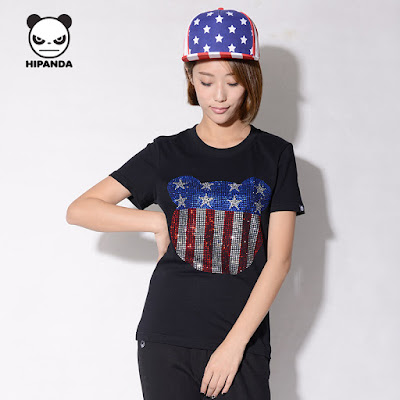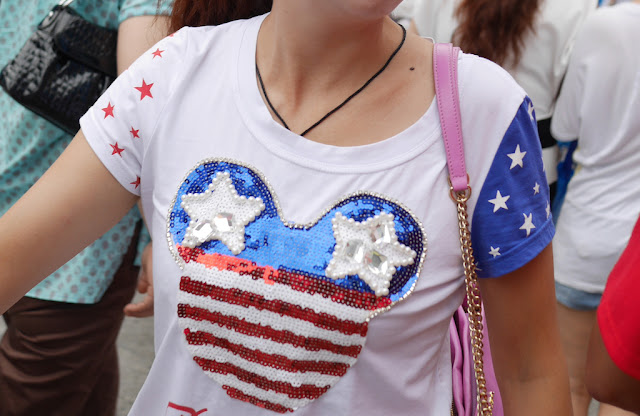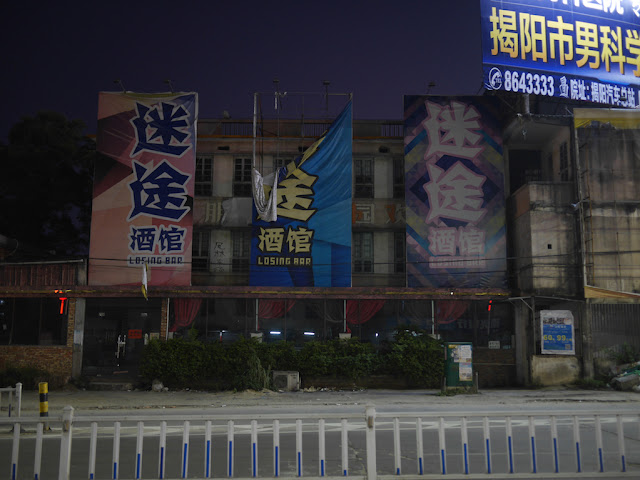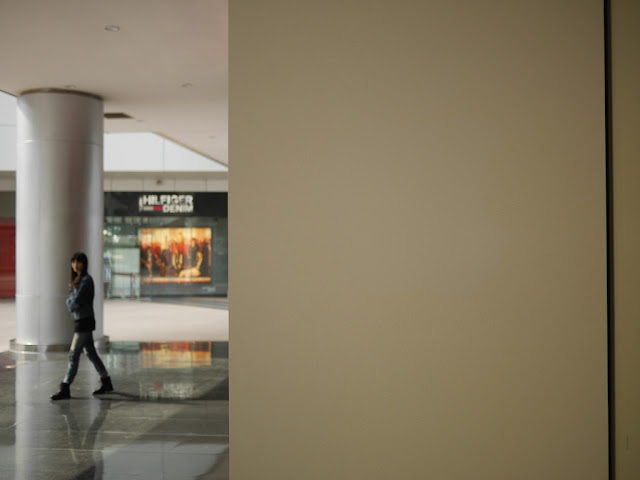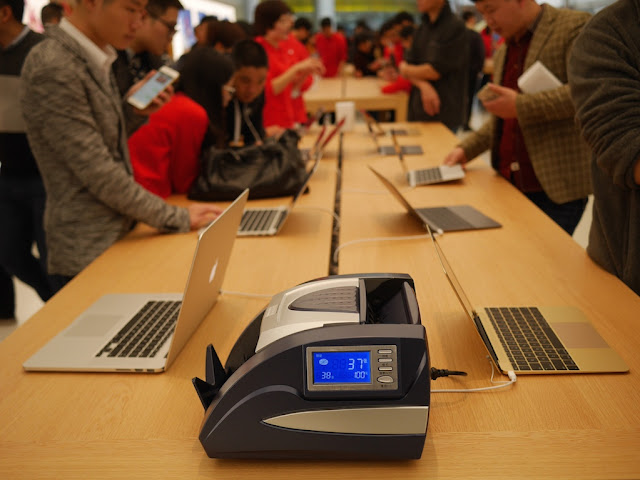In a post about how Disney's new resort in Shanghai and what it says about both American and Chinese influence, I shared a photo of a shirt I saw two years ago in Hengyang, Hunan:
I chose the photo because the Mickey-Mouse-like shape on the shirt appears to incorporate the design of the national flag of the U.S. However the shape isn't a perfect match to the standard Disney's Mouse Ears Mark; for example, the ears aren't the same shape and proportion.
Perhaps the designer failed to execute the design or deliberately made the difference in the hope to avoid violating trademark laws.
There was another possibility, though, which seemed at least as likely and caused me to hesitate before using the photo in a post about Disney. The shape on the shirt is also similar to a head shape used by HIPANDA — a Chinese fashion brand which has received international attention.
HIPANDA's online store at Tmall currently sells a shirt with a similar American spirit and sparkly design:
Other HIPANDA shirts with a Stars and Stripes design are available as well, including this one:
The silhouette of the head on the Hengyang shirt doesn't perfectly match the standard HIPANDA head either, though I would argue it is a closer match than with Disney's Mouse Ears Mark. Presumably it isn't an official HIPANDA shirt.
So was the designer of the Hengyang shirt trying to imitate Mickey Mouse or HIPANDA? Or was the designer aiming for something which could be interpreted as either? I am not aware of any trademark disputes between Disney and HIPANDA, yet both might take issue with the shirt's design which fits into a space between Disney's Mouse Ears Mark and the HIPANDA head silhouette.
Whatever the designer's intent, the Hengyang shirt's design could be interpreted as "Disney". And other aspects of its design suggest American influence. It was the most compelling example I could find in my photos without great effort. So I went ahead and used it in the Disney post, although I wondered if I would receive any critical response (I did not).
Since then, I have seen shirts with more clearcut examples combining Disney and American influence themes. And shirts with designs reminiscent of the American flag, like the HIPANDA examples, have been a common sight in China. I have also recently seen many people wearing shirts with Mickey Mouse designs — a number of Donald Duck sightings as well. I am willing to bet at least some of the shirts don't have Disney's official blessing. More about all of these shirts later.
I chose the photo because the Mickey-Mouse-like shape on the shirt appears to incorporate the design of the national flag of the U.S. However the shape isn't a perfect match to the standard Disney's Mouse Ears Mark; for example, the ears aren't the same shape and proportion.
 |
| Image source |
There was another possibility, though, which seemed at least as likely and caused me to hesitate before using the photo in a post about Disney. The shape on the shirt is also similar to a head shape used by HIPANDA — a Chinese fashion brand which has received international attention.
HIPANDA's online store at Tmall currently sells a shirt with a similar American spirit and sparkly design:
Other HIPANDA shirts with a Stars and Stripes design are available as well, including this one:
The silhouette of the head on the Hengyang shirt doesn't perfectly match the standard HIPANDA head either, though I would argue it is a closer match than with Disney's Mouse Ears Mark. Presumably it isn't an official HIPANDA shirt.
So was the designer of the Hengyang shirt trying to imitate Mickey Mouse or HIPANDA? Or was the designer aiming for something which could be interpreted as either? I am not aware of any trademark disputes between Disney and HIPANDA, yet both might take issue with the shirt's design which fits into a space between Disney's Mouse Ears Mark and the HIPANDA head silhouette.
Whatever the designer's intent, the Hengyang shirt's design could be interpreted as "Disney". And other aspects of its design suggest American influence. It was the most compelling example I could find in my photos without great effort. So I went ahead and used it in the Disney post, although I wondered if I would receive any critical response (I did not).
Since then, I have seen shirts with more clearcut examples combining Disney and American influence themes. And shirts with designs reminiscent of the American flag, like the HIPANDA examples, have been a common sight in China. I have also recently seen many people wearing shirts with Mickey Mouse designs — a number of Donald Duck sightings as well. I am willing to bet at least some of the shirts don't have Disney's official blessing. More about all of these shirts later.


